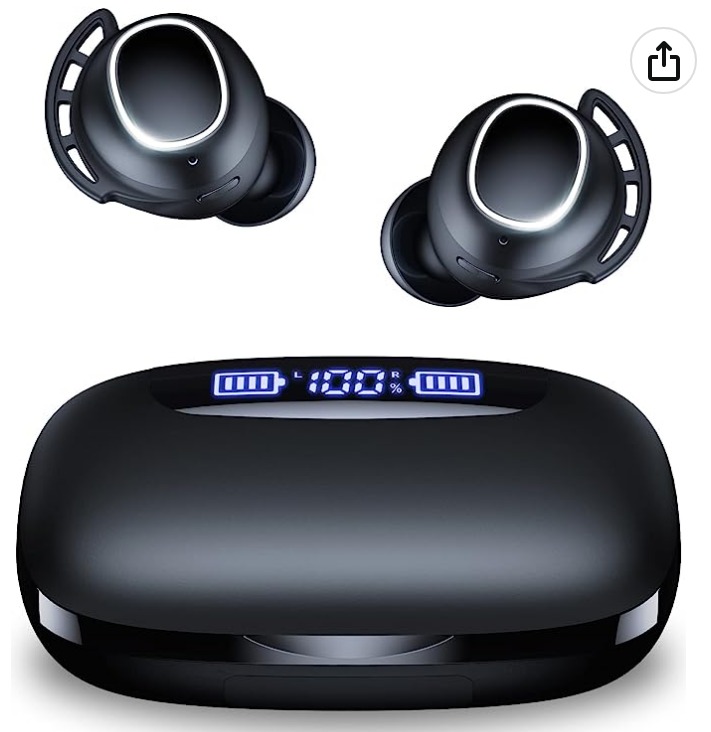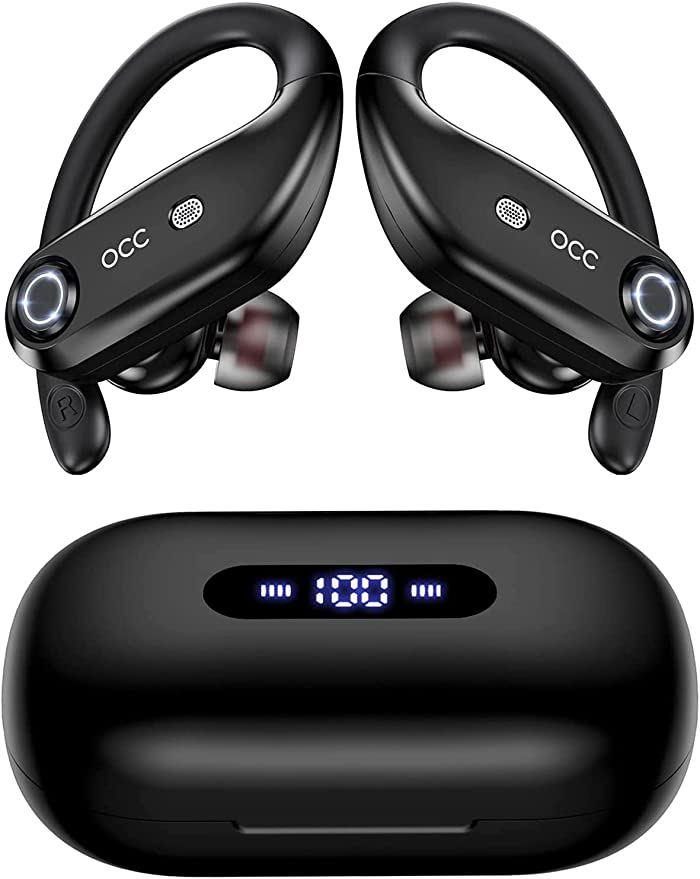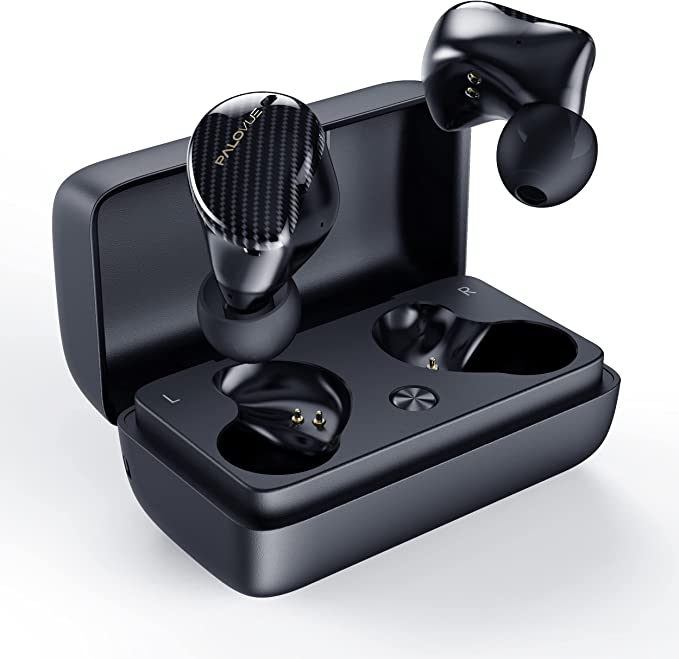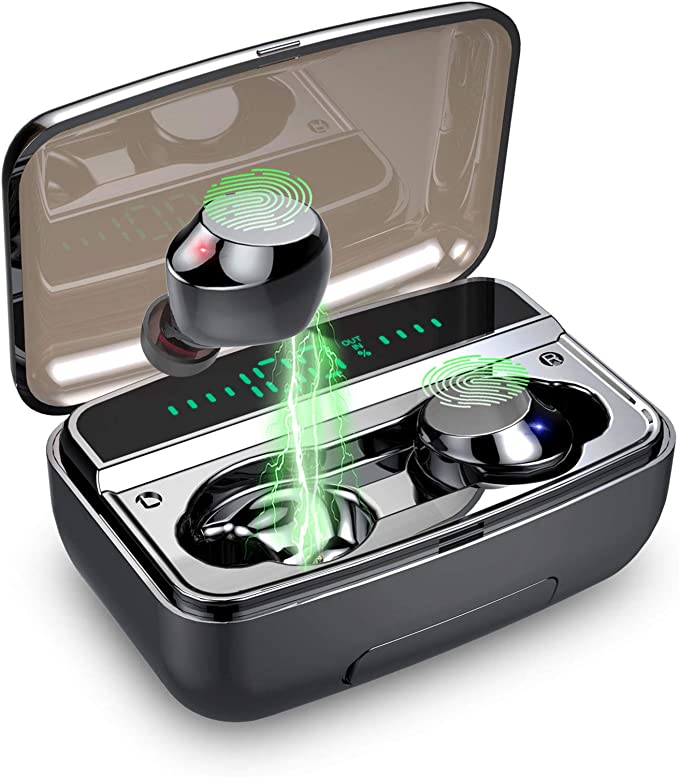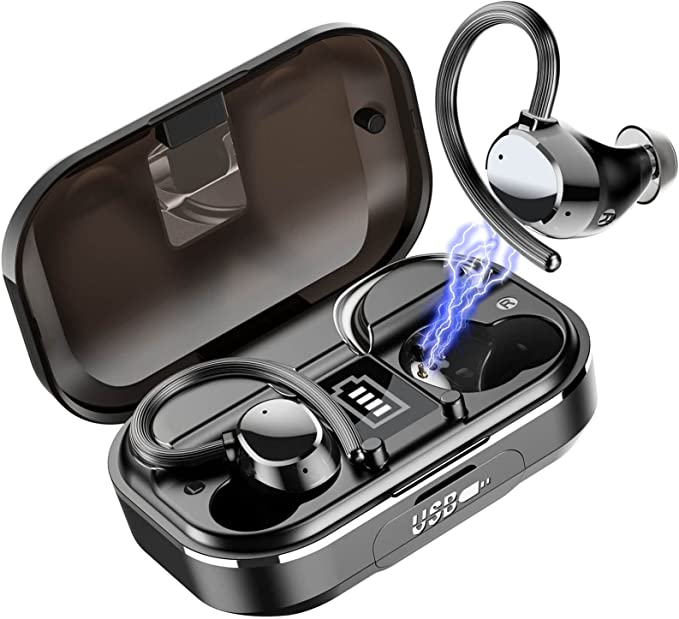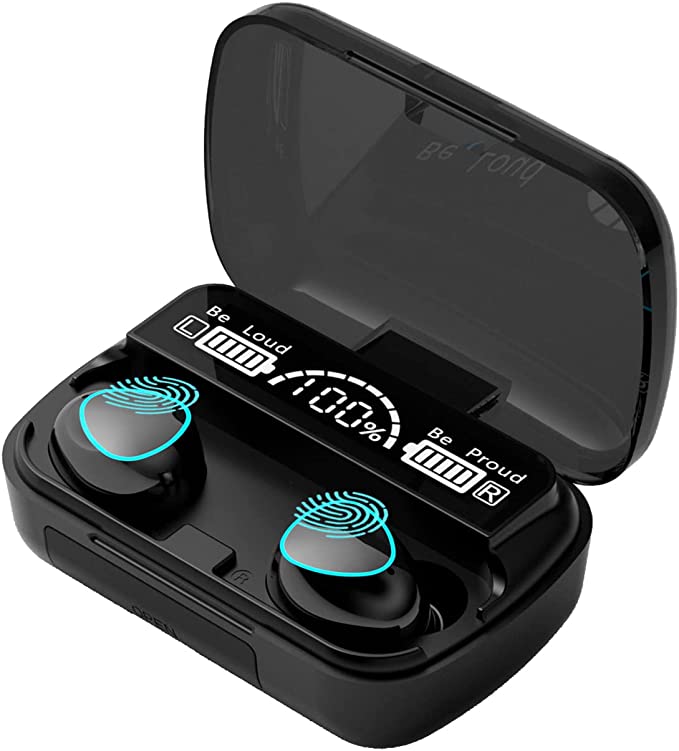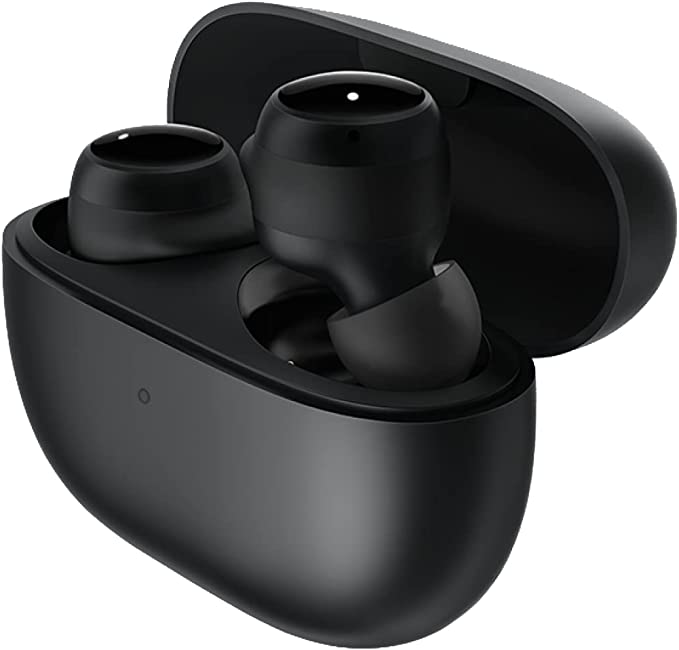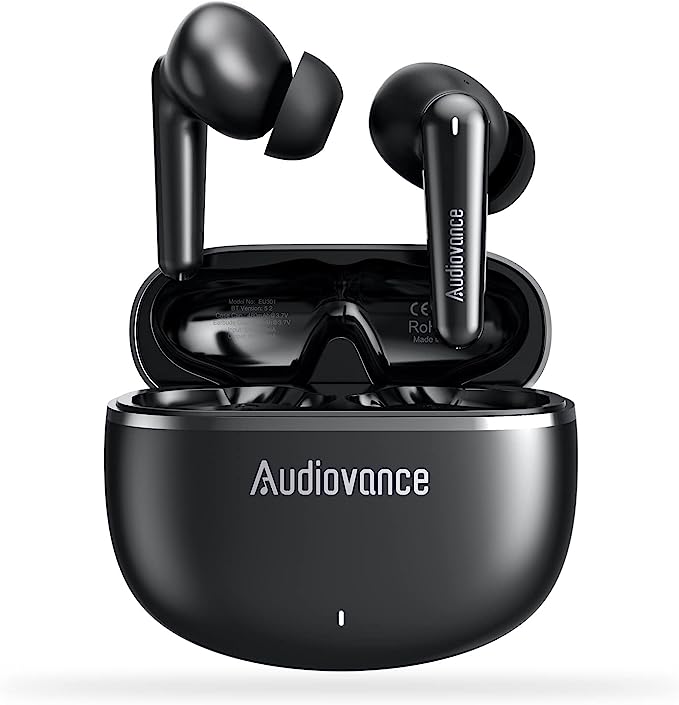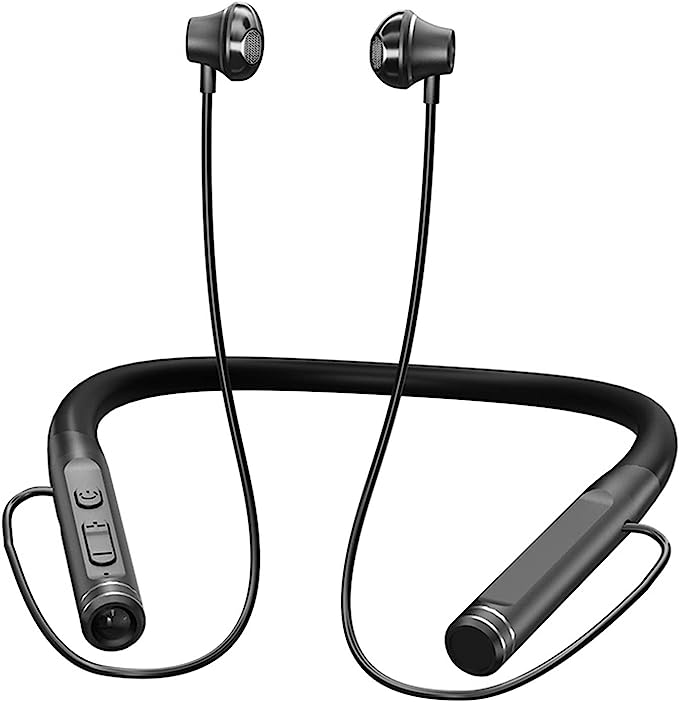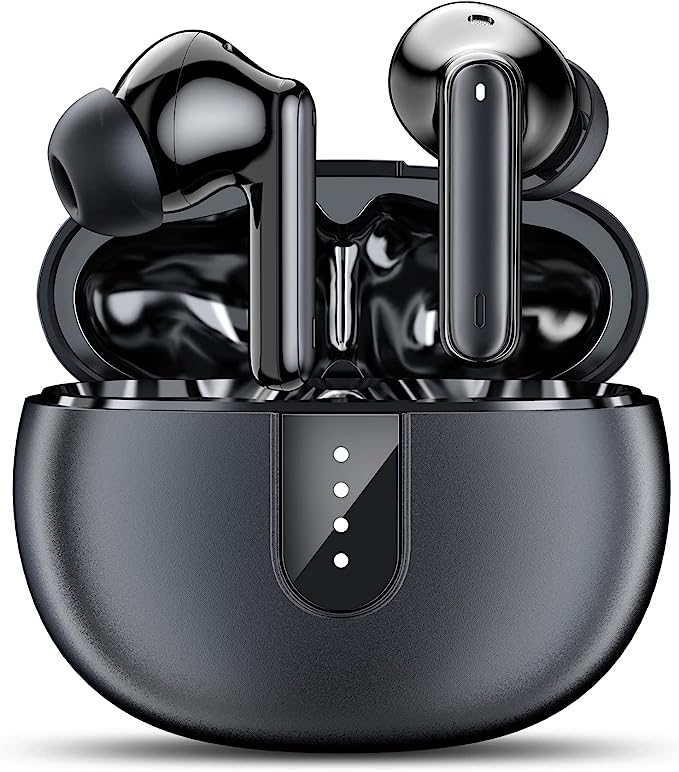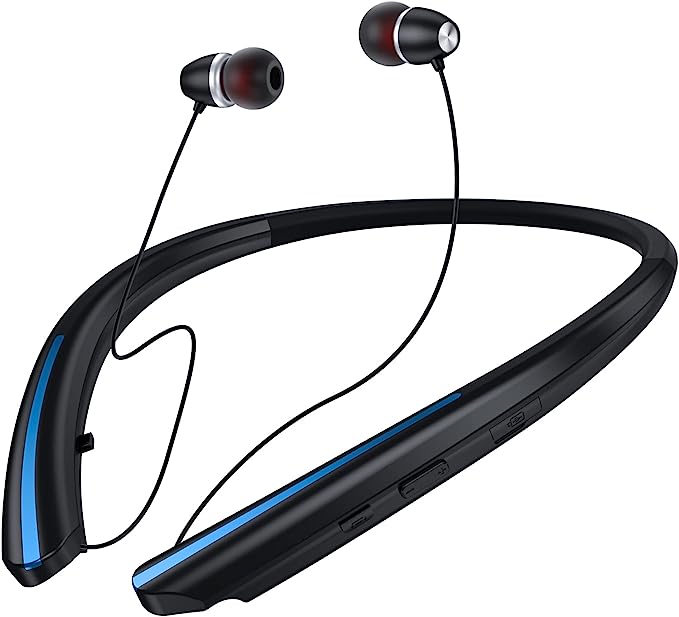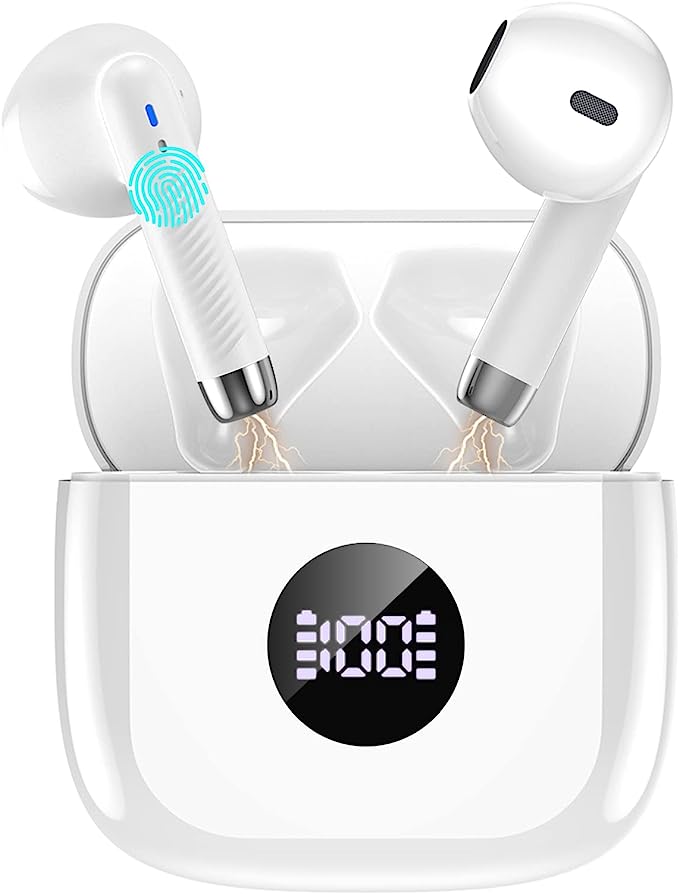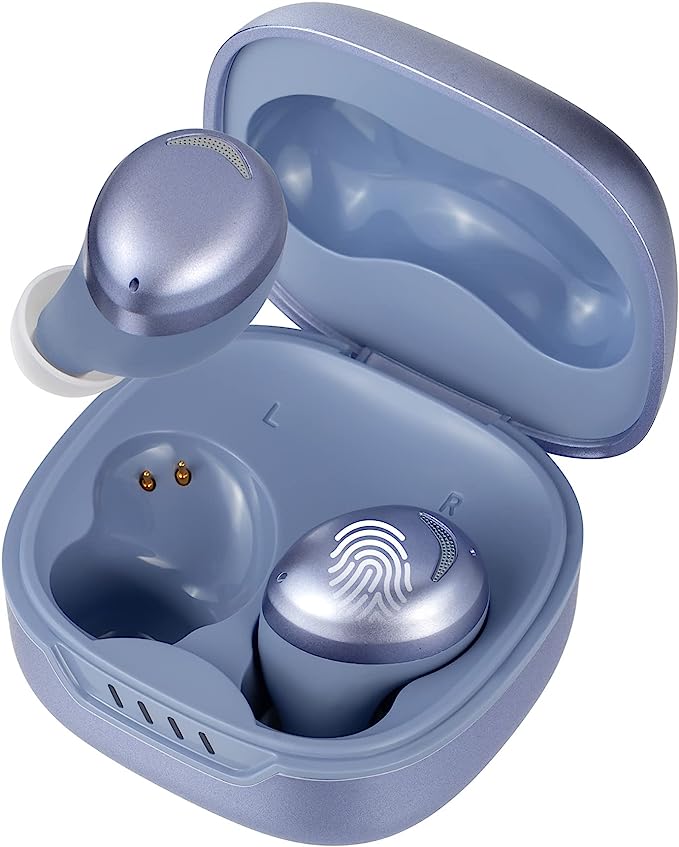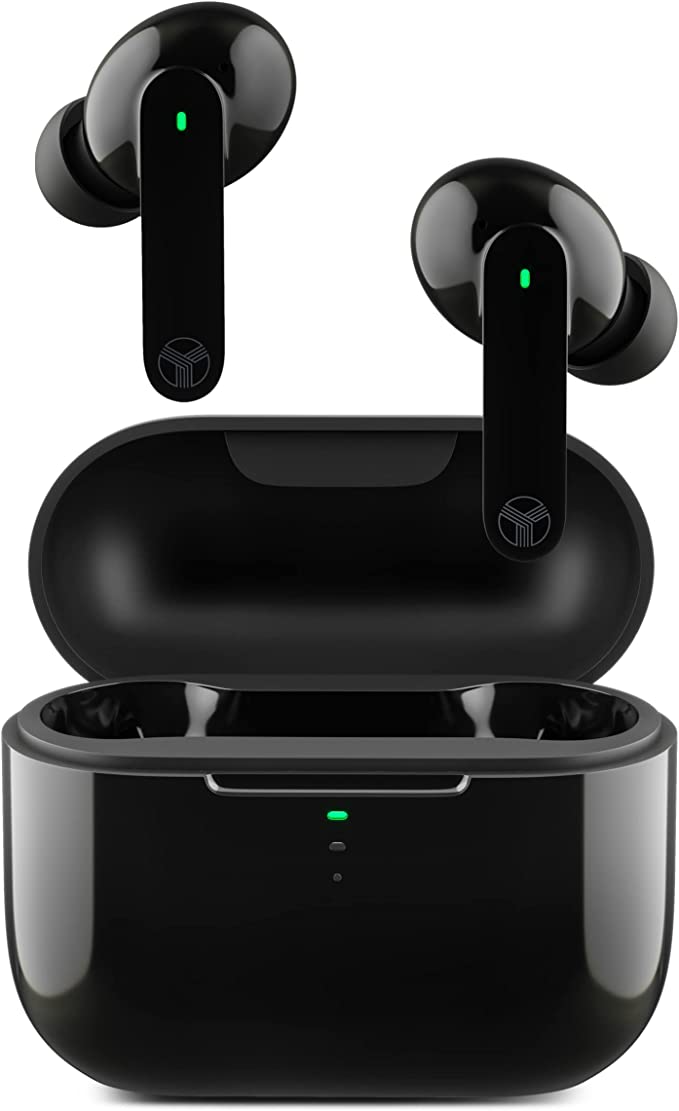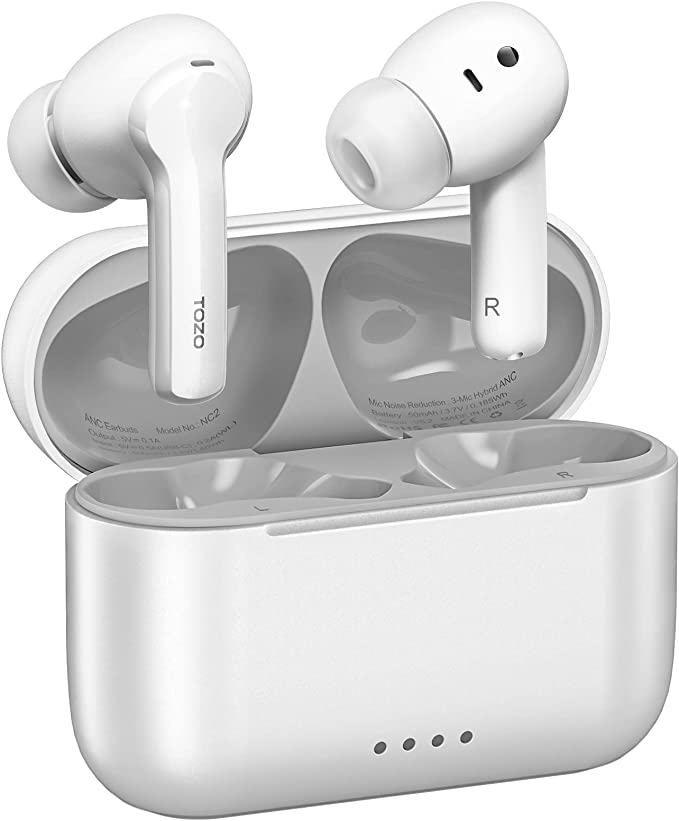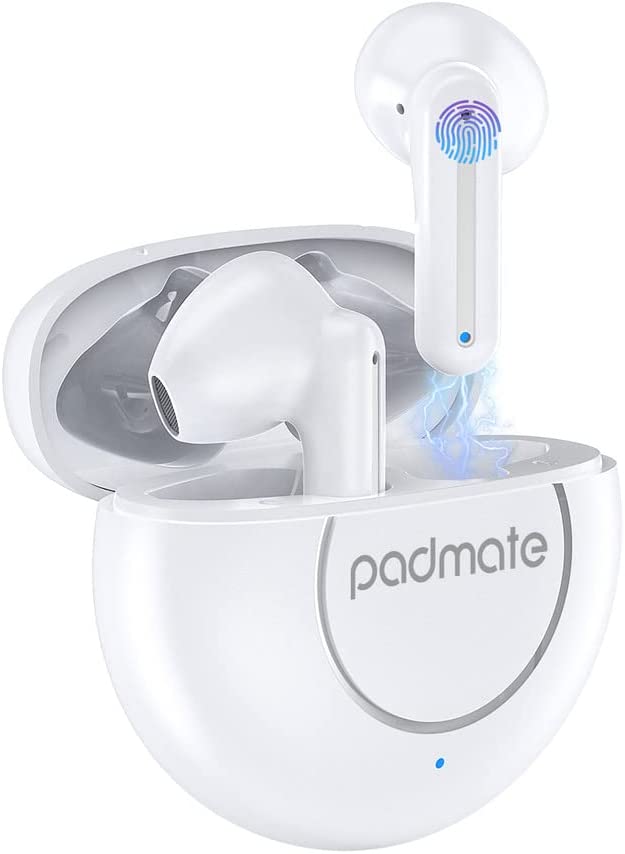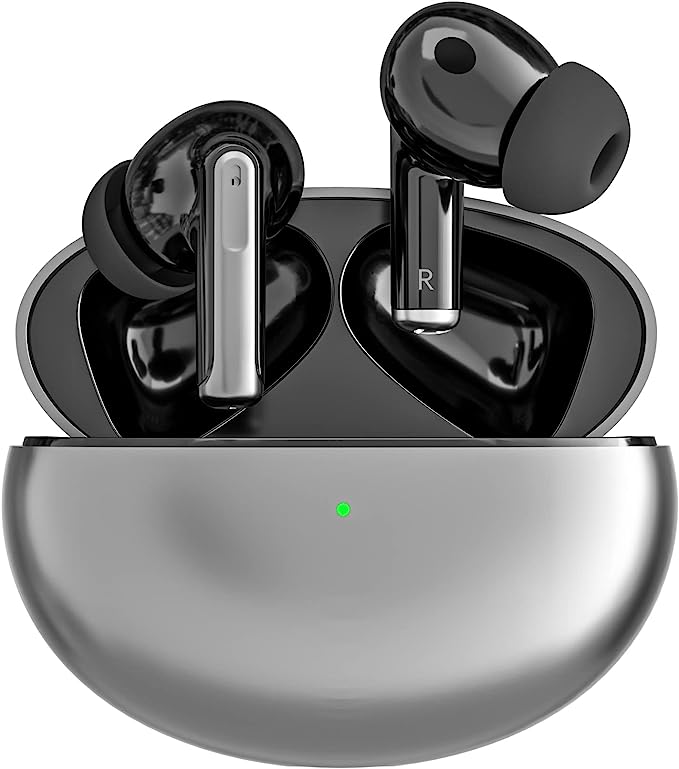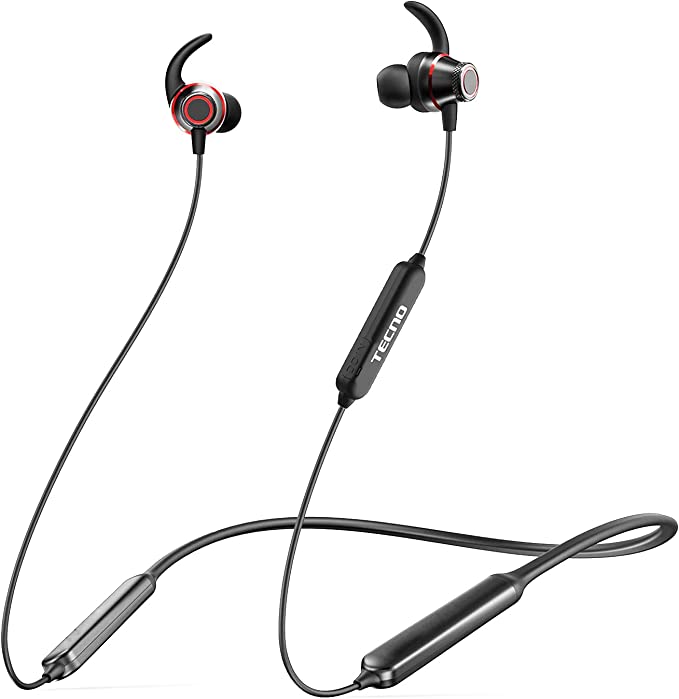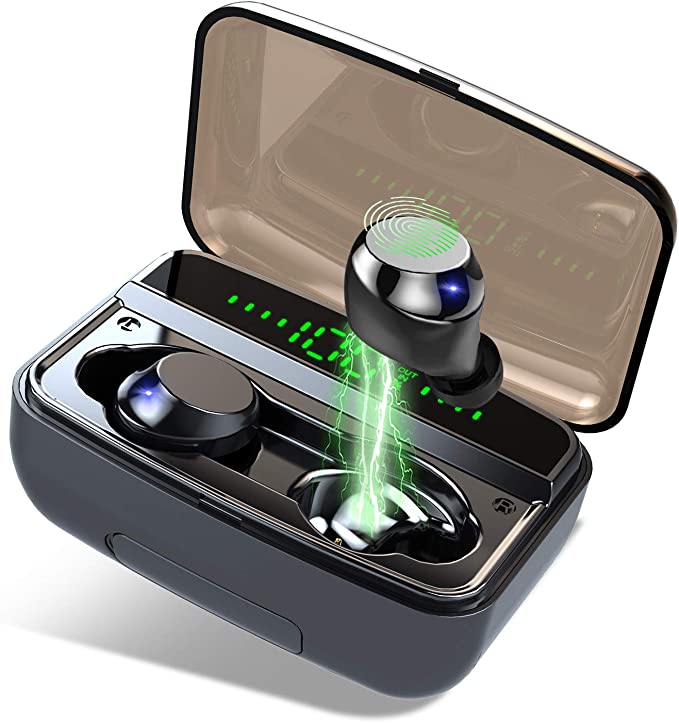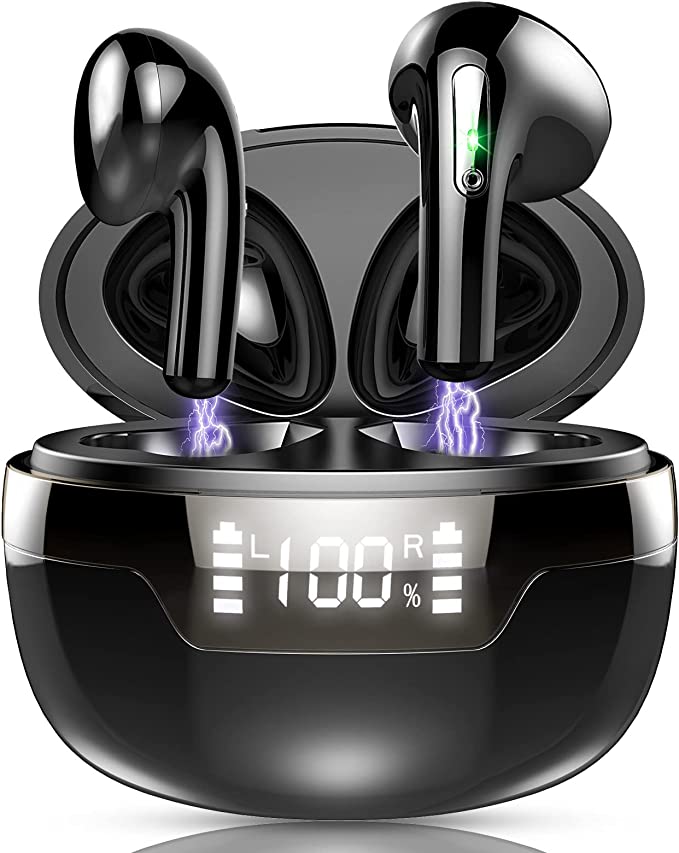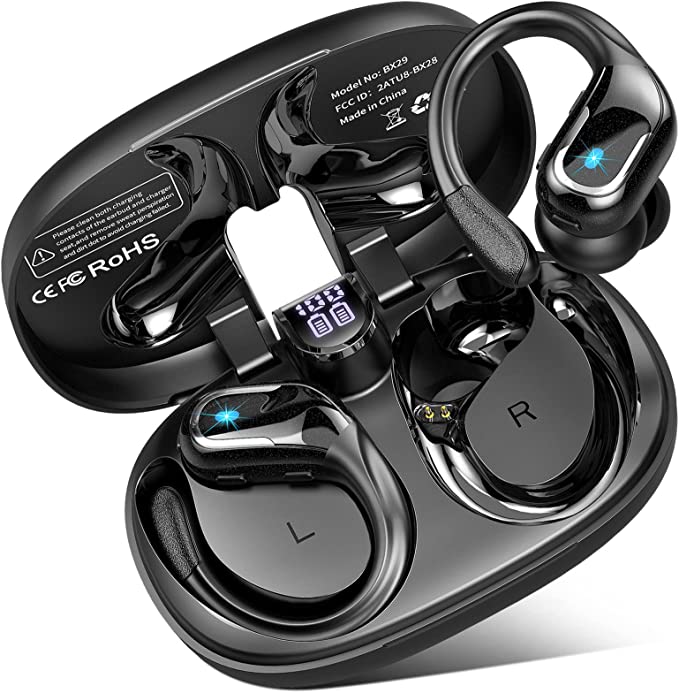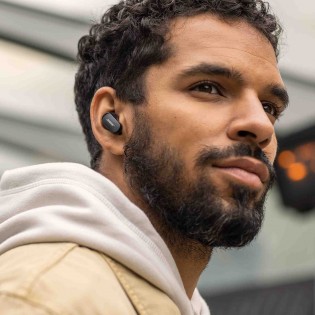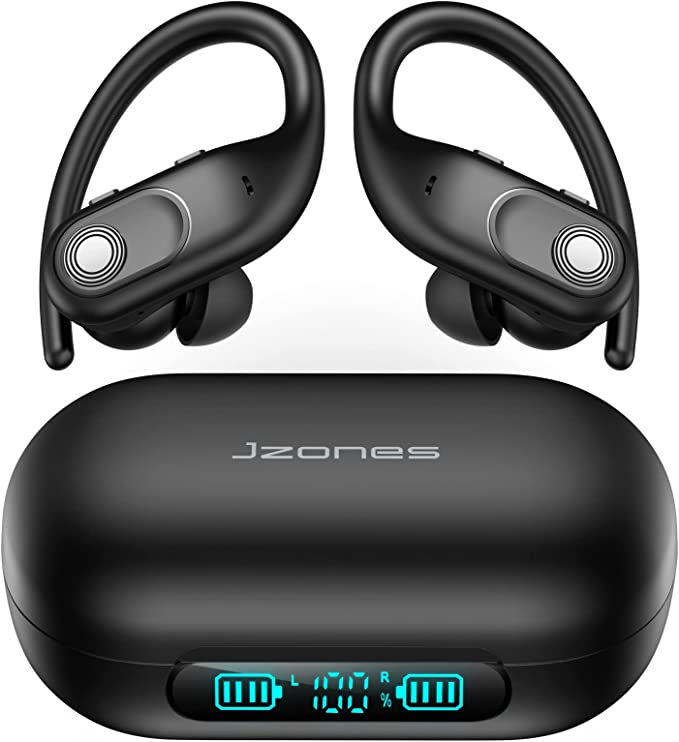AUOUA Life On Music J5 PRO Wireless Earbuds: Long-Lasting Battery & Clear Calls
Update on Feb. 22, 2025, 7:14 a.m.
A World of Sound, Unwired
Wireless earbuds have become as commonplace as smartphones themselves. We use them to soundtrack our commutes, power through workouts, and stay connected during busy days. But this reliance on wireless audio often comes with frustrations: the dreaded low-battery warning just when you need your music most, or the struggle to hear a call over the roar of a city street. Let’s explore the fascinating science that makes these tiny devices work, using the AUOUA Life On Music J5 PRO earbuds as a case study to understand the underlying technology.

The Physics of Sound
Before we dive into the wireless aspects, let’s appreciate the fundamental phenomenon these devices are designed to reproduce: sound. Sound, in its simplest form, is a vibration that travels as a wave through a medium, like air. These vibrations create pressure changes that our ears detect and our brains interpret as sound.
Several key characteristics define a sound wave:
- Frequency: This refers to the number of vibrations per second, measured in Hertz (Hz). Frequency determines the pitch of a sound. A high-frequency sound wave has a high pitch (like a whistle), while a low-frequency sound wave has a low pitch (like a bass drum). Humans can typically hear sounds ranging from 20 Hz to 20,000 Hz, although this range can decrease with age.
- Amplitude: This refers to the intensity of the vibration, or the size of the pressure changes. Amplitude determines the loudness of a sound. A larger amplitude means a louder sound. We measure loudness in decibels (dB). The decibel scale is logarithmic, meaning a 10 dB increase represents a tenfold increase in sound intensity.
- Timbre also known as tone color or tone quality is the perceived sound quality of a musical note.
Our ears are remarkable organs, capable of detecting these subtle pressure variations. Sound waves enter the ear canal and cause the eardrum to vibrate. These vibrations are then amplified by tiny bones in the middle ear and transmitted to the cochlea, a fluid-filled structure in the inner ear. Inside the cochlea, thousands of hair cells convert these vibrations into electrical signals that are sent to the brain via the auditory nerve.
But how do we capture and reproduce these complex vibrations digitally? This is where digital audio comes in. Analog sound waves are continuous, meaning they have an infinite number of possible values. To store and transmit sound digitally, we need to convert it into a discrete representation. This is done through a process called sampling.
- Sampling Rate: This refers to the number of times per second that we measure the amplitude of the analog sound wave. The higher the sampling rate, the more accurately we can capture the original sound. Common sampling rates include 44.1 kHz (used for CDs) and 48 kHz (used for DVDs).
- Bit Depth: This refers to the number of bits used to represent each sample. The higher the bit depth, the more accurately we can represent the amplitude of the sound wave. Common bit depths include 16-bit (used for CDs) and 24-bit (used for high-resolution audio).

The Magic of Wireless: Bluetooth and Wireless Charging
The AUOUA J5 PRO earbuds, like many others, rely on two key wireless technologies: Bluetooth for audio transmission and electromagnetic induction for wireless charging.
Bluetooth: A Brief History
Bluetooth, named after a 10th-century Danish king, Harald “Bluetooth” Gormsson, is a short-range wireless technology standard used for exchanging data between fixed and mobile devices over short distances using short-wavelength UHF radio waves in the industrial, scientific and medical radio bands, from 2.400 to 2.485 GHz, and building personal area networks (PANs).
Over the years, Bluetooth has evolved through various versions, each offering improvements in data transfer speed, power efficiency, and range. While we don’t know the exact Bluetooth version used in the J5 PRO, newer versions (like Bluetooth 5.0 and above) generally offer significantly better power efficiency, which contributes to longer battery life.
Another crucial aspect of Bluetooth audio is the audio codec. A codec is an algorithm that encodes and decodes digital audio data. Different codecs offer varying levels of compression and sound quality. Common Bluetooth codecs include:
- SBC (Subband Coding): The mandatory and default codec for all Bluetooth devices. It offers decent audio quality but is not the most efficient.
- AAC (Advanced Audio Coding): Commonly used by Apple devices, AAC offers better sound quality than SBC at similar bitrates.
- aptX (various versions): Developed by Qualcomm, aptX codecs offer improved sound quality and lower latency compared to SBC.
- LDAC: Developed by Sony, LDAC is a codec allowing high-quality audio via Bluetooth.
Without knowing the specific codec supported by the J5 PRO, it’s difficult to comment definitively on its audio quality. However, support for AAC or aptX would suggest better sound quality than SBC alone.
Wireless Charging: The Science of Electromagnetic Induction
Wireless charging, a feature of the J5 PRO’s charging case, relies on the principle of electromagnetic induction. This principle, discovered by Michael Faraday in the 19th century, states that a changing magnetic field can induce an electric current in a nearby conductor.
In a wireless charging system, there are two coils: a transmitter coil in the charging case and a receiver coil in the earbuds. When the charging case is plugged in, an alternating current (AC) flows through the transmitter coil. This creates an oscillating magnetic field around the coil. When the earbuds (containing the receiver coil) are placed within this magnetic field, the changing magnetic field induces an alternating current in the receiver coil. This induced current is then used to charge the earbuds’ battery.

Silence the Noise, Amplify Clarity
Noise cancellation is a highly desirable feature in modern headphones, particularly for those who frequently use them in noisy environments. There are several approaches to noise cancellation:
- Passive Noise Isolation: This relies on the physical design of the headphones to block out external noise. In-ear headphones, like the J5 PRO, achieve passive noise isolation by creating a seal in the ear canal. This seal physically prevents sound waves from entering the ear.
-
Active Noise Cancellation (ANC): ANC is a more sophisticated technology that uses microphones and electronic circuitry to actively cancel out noise. Here’s how it works:
- Microphones: Tiny microphones on the outside of the headphones pick up external noise.
- Noise-Cancelling Circuitry: This circuitry analyzes the incoming noise and generates an “anti-noise” signal that is 180 degrees out of phase with the original noise.
- Speaker: The anti-noise signal is played through the headphones’ speakers, along with the desired audio (music, calls, etc.).
- Cancellation: When the original noise wave and the anti-noise wave meet, they interfere destructively, effectively canceling each other out.
-
Environmental Noise Cancellation (ENC) primarily focuses on reducing background noise during calls.
ANC is most effective at cancelling out constant, low-frequency sounds, such as the hum of an airplane engine or the rumble of traffic. It’s less effective at cancelling out sudden, high-frequency sounds, like a shout or a car horn.
The product information for the J5 PRO mentions “noise cancelling” but doesn’t specify the type. Given its price point, it’s possible that it utilizes a form of ENC to enhance call clarity, rather than full-fledged ANC. It’s important to reiterate that this is a hypothesis based on common industry practices, not a confirmed fact.
Powering Your Sound: Battery Technology
The impressive 60-hour playback time of the J5 PRO earbuds is a testament to advancements in battery technology. Most wireless earbuds, including the J5 PRO, use lithium-ion batteries. These batteries are popular because they are lightweight, have a high energy density (meaning they can store a lot of energy for their size), and have a relatively long lifespan.
Here’s a simplified explanation of how a lithium-ion battery works:
- Components: A lithium-ion battery consists of a positive electrode (cathode), a negative electrode (anode), a separator, and an electrolyte.
- Charging: When you charge the battery, lithium ions move from the cathode, through the electrolyte, to the anode. Electrons also flow from the cathode to the anode, but through an external circuit.
- Discharging: When you use the battery, lithium ions move back from the anode, through the electrolyte, to the cathode. Electrons flow back from the anode to the cathode through the external circuit, powering the device.
Several factors influence the battery life of wireless earbuds:
- Battery Capacity: Measured in milliampere-hours (mAh), this indicates how much charge the battery can store. A larger capacity generally means longer battery life. The J5 PRO likely has a relatively high-capacity battery in both the earbuds and the charging case.
- Bluetooth Version: As mentioned earlier, newer Bluetooth versions are more energy-efficient.
- Audio Codec: More efficient codecs (like AAC) consume less power.
- Volume Level: Listening at higher volumes consumes more power.
- Ambient Temperature: Extreme temperatures (both hot and cold) can negatively impact battery performance.
- Noise Cancellation Usage: Active noise cancellation (if present) consumes additional power.
Withstand the Elements: IPX5 Waterproof
The IPX5 rating signifies the earbuds’ resistance to water. ‘IP’ stands for ‘Ingress Protection,’ the ‘X’ indicates no specific dust protection data, and ‘5’ denotes the water resistance level. Specifically, IPX5 means the earbuds can withstand water jets projected by a nozzle (6.3 mm) from any direction without harmful effects.
This level of protection makes the J5 PRO suitable for workouts, outdoor activities, and use in light rain, but it doesn’t mean they are fully waterproof and shouldn’t be submerged in water.
Designed for Your Ears
The J5 PRO are in-ear headphones, meaning they fit directly into the ear canal. This design provides good passive noise isolation and a secure fit, making them suitable for activities like running or working out. However, the fit can vary depending on the size and shape of your ears. It’s often recommended to try different sizes of ear tips (usually included with in-ear headphones) to find the most comfortable and secure fit.
The sound quality of headphones is significantly influenced by the driver, the component that converts electrical signals into sound waves. There are two main types of drivers commonly used in headphones:
- Dynamic Drivers: These are the most common type of driver. They use a diaphragm attached to a voice coil, which is suspended in a magnetic field. When an electrical signal passes through the voice coil, it creates a magnetic field that interacts with the permanent magnet, causing the diaphragm to vibrate and produce sound. Dynamic drivers are generally known for their powerful bass response.
- Balanced Armature Drivers: These drivers are smaller and more efficient than dynamic drivers. They use a tiny armature (a small, lightweight piece of metal) that is balanced in a magnetic field. When an electrical signal passes through a coil wrapped around the armature, it causes the armature to vibrate. This vibration is then transferred to a diaphragm, which produces sound. Balanced armature drivers are often praised for their detailed and accurate sound reproduction, particularly in the mid and high frequencies. They are commonly found in higher-end in-ear monitors (IEMs).
While the product information doesn’t specify the driver type used in the J5 PRO, given its price point, it’s highly probable that it uses a dynamic driver. Dynamic drivers are more cost-effective to manufacture and can still deliver a satisfying listening experience, especially for users who prioritize bass response.
The Future is Wireless
The AUOUA Life On Music J5 PRO wireless earbuds showcase several key technologies that are shaping the world of personal audio: Bluetooth connectivity, wireless charging, noise cancellation, and long-lasting battery life. While we’ve had to make educated guesses about some of the specific technical details (like the exact Bluetooth version, audio codec, and noise-canceling technology), the underlying principles remain the same.
These earbuds represent a significant step towards a truly wireless audio experience, freeing users from the constraints of tangled wires and short battery life. The IPX5 water resistance adds another layer of versatility, making them suitable for a wider range of activities.
Looking ahead, we can expect even further advancements in wireless audio technology. We’ll likely see:
- Even Longer Battery Life: Continued improvements in battery technology and power-efficient components will push battery life even further.
- More Sophisticated Noise Cancellation: Noise-canceling technology will continue to evolve, becoming better at blocking out a wider range of sounds and adapting to different environments.
- Higher-Quality Audio: Advances in Bluetooth codecs and driver technology will enable higher-fidelity audio transmission and reproduction.
- Smarter Features: Wireless earbuds may incorporate more smart features, such as real-time translation, health monitoring, and personalized sound profiles.
- Smaller and More Comfortable Designs: Advances in materials science and miniaturization will lead to even smaller and more comfortable earbuds.
The evolution of wireless earbuds, exemplified by products like the J5 PRO, demonstrates the ongoing quest to deliver a seamless, immersive, and convenient audio experience. As technology continues to advance, we can expect even more impressive innovations in the years to come. The core concepts we’ve discussed – the physics of sound, the principles of wireless communication, and the intricacies of battery technology – will continue to be fundamental to understanding and appreciating these ever-evolving devices.
